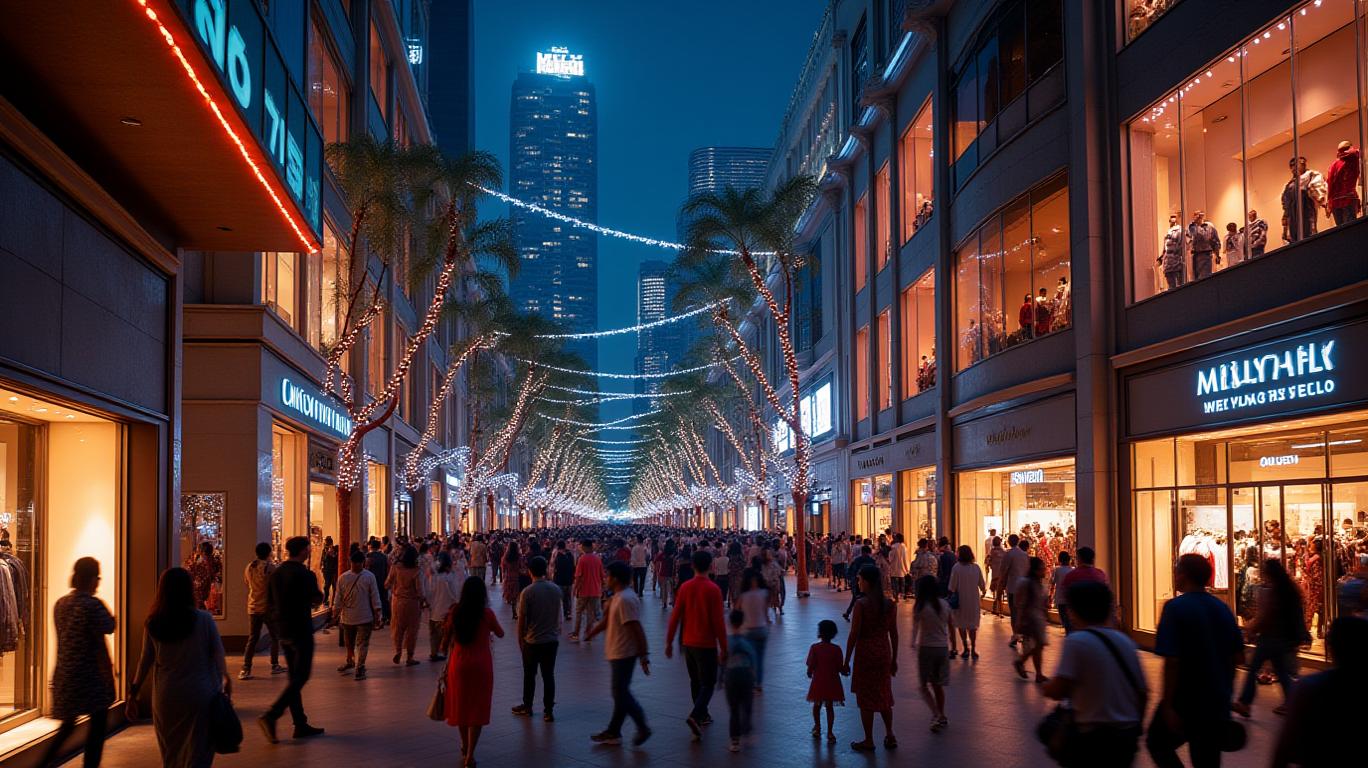The Luxury Sector's Shift Toward Value-Driven Consumption and Its Investment Implications
The luxury sector, once synonymous with opulence and excess, is undergoing a seismic shift. Post-pandemic consumers are demanding value-driven consumption—a blend of affordability, sustainability, and exclusivity—that is reshaping brand strategies and creating compelling investment opportunities, particularly in emerging markets. This transformation is not just a cyclical adjustment but a structural evolution. For investors, the question is no longer whether to engage with luxury equities but which brands and markets will dominate this new paradigm.
Emerging Markets: The New Growth Engine
The luxury sector’s center of
is shifting eastward. By 2030, emerging markets like India, Southeast Asia, and Africa could add 50 million upper-middle-class consumers to the luxury ecosystem, according to Bain & Company. These regions are driving demand for value-for-money purchases, with outlet stores and secondhand markets surging in popularity.
Take India: 84% of consumers there plan to increase luxury spending, prioritizing social status and premium goods. Yet they are price-sensitive, favoring online discovery and digital engagement. Brands like LVMH and Kering are responding with localized omnichannel strategies—virtual try-ons, AI-driven personalization, and curated experiences—to capture this audience.
The secondhand luxury market is another frontier. Now worth €48 billion, it is growing at 7% annually, with watches and jewelry dominating sales. Platforms like Vestiaire Collective and The RealReal are monetizing this trend, but traditional brands must ensure their resale channels do not dilute exclusivity.
Sustainability: From Nice-to-Have to Non-Negotiable
Younger generations—Gen Z and millennials, now 45% of luxury buyers—are demanding eco-conscious practices. Brands like Kering (owner of Gucci) are leading the charge, with net-zero targets, 100% renewable energy commitments, and collaborations with sustainability-focused startups.
This is not just virtue signaling. Sustainable materials and transparency in supply chains are now differentiators. For instance, Gucci’s “Off the Grid” line, using recycled plastics and organic cotton, sold out within hours of its 2020 launch. Investors should prioritize companies with measurable ESG goals and third-party validations (e.g., MSCI ratings).
Affordability Without Compromise
The sector’s post-pandemic slowdown—personal luxury goods sales fell 2% in 2024—has forced brands to rebalance the luxury equation. Affordability is key, but it must not come at the cost of exclusivity.
- Outlet Channels: Outlets grew 0–3% in 2024, outperforming full-price retail. Brands like Prada are expanding their outlet networks to attract price-sensitive buyers while maintaining flagship prestige.
- Tiered Pricing: High-end players are introducing mid-tier lines. LVMH’s Celine, for example, now offers accessible leather goods alongside its signature designs.
- Subscription Models: Luxury hospitality and travel brands (e.g., Belmond, Four Seasons) are monetizing loyalty through membership tiers, blending affordability with personalized service.
Exclusivity Through Experience
To preserve desirability, luxury brands are pivoting from goods to experiences. The experiential segment grew 5% in 2024, outpacing physical goods. Consider:
- Ultra-Luxury Services: Private jets, yachts, and bespoke travel itineraries are thriving, with demand up 13% as wealth holders seek “money-can’t-buy” moments.
- Art and Culture: Brands like LVMH are integrating art collections and limited-edition collaborations to create scarcity and emotional resonance.
- Personalization: AI-driven tailoring (e.g., Tiffany’s engraving services, Lane Crawford’s recommendation algorithms) is becoming table stakes for retaining high-value clients.
Investment Implications: Where to Deploy Capital Now
The luxury sector’s post-pandemic recalibration offers three clear investment vectors:
- Sustainability Leaders:
- Kering (KER.PA): Its ESG leadership (MSCI AAA rating) and Gucci’s brand power make it a top pick.
Richemont (SWISS:CFR): Dominates in watches and jewelry—categories growing 8–9% annually.
Emerging Market Playbook Executers:
- LVMH (MC.PA): Its diversified portfolio (fashion, wine, travel) and aggressive digital expansion in India/Asia position it to capture growth.
Shanghai Tang (HKG:1982): A Chinese heritage brand leveraging local cultural resonance and sustainability.
Experiential Champions:
- Four Seasons (FS.H): Hospitality’s premium tier, with 4% growth in 2024.
- NetJets (a Berkshire Hathaway subsidiary): Private aviation’s demand is surging, with waiting lists growing 15% in 2023.
Risks and the Path Forward
The sector is not without headwinds:
- Macroeconomic Volatility: China’s real estate slowdown and U.S. interest rates remain risks.
- Overexposure: Brands that scale too fast risk diluting exclusivity.
Yet the long-term thesis is clear: luxury consumption is evolving, not contracting. Investors who back brands that master affordability, sustainability, and experiential value will profit as emerging markets mature and Gen Z becomes the dominant buyer.
The luxury sector’s shift is not just a trend—it is a revolution. For those willing to act now, the rewards are exceptional.
Investors should consider diversifying their portfolios with exposure to luxury equities that align with these themes. Past performance does not guarantee future results.

Comments
No comments yet